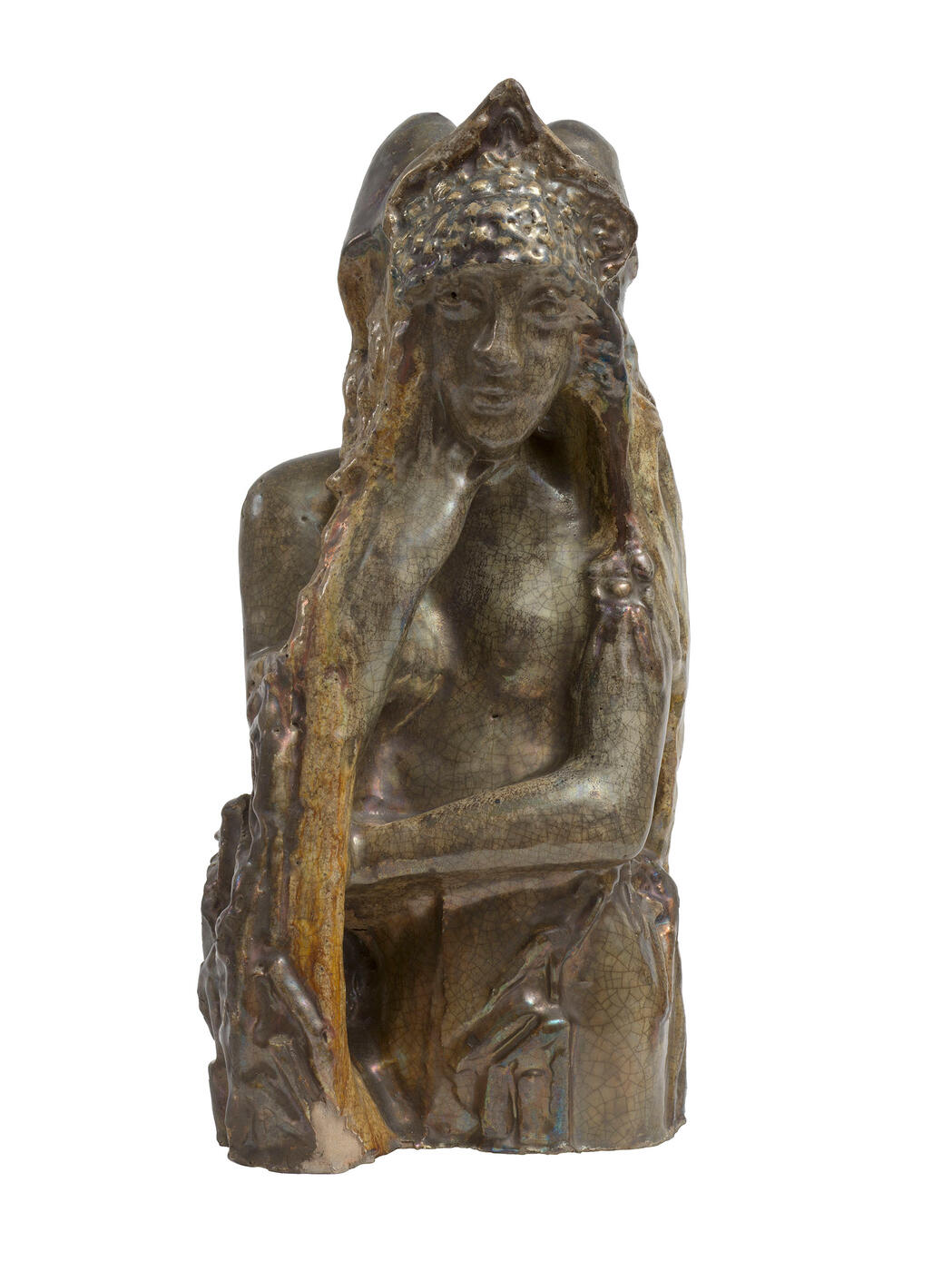5 June 2019 Important Russian Art Auctions, at Asia House
5 June 2019

* 48. VRUBEL, MIKHAIL (1856–1910)
Volkhova .
Earthenware with lustre glazes, height 41.5 cm.
80,000–120,000 GBP
Provenance: Icons, Russian Pictures and Works of Art, Sotheby’s London, 24 November 1992, lot 36.
Private collection, Europe.
Related literature: For similar works, see Ia Peterburg Liubliu. Russkii muzei v Moskve, St Petersburg, Palace Editions, p. 104, illustrated and listed.
Il Simbolismo russo. Sergej Djagilev e l’Età d’argento nell’arte, Milano, Electra, 1992, p. 143, No. 101, illustrated in black and white; p. 201, listed.
Volkhova belongs to Mikhail Vrubel’s famous series of sculptures inspired by Nikolai Rimsky-Korsakov’s opera Sadko. The artist first tackled this folk story in 1897, after marrying the opera singer Nadezhda Zabela (1868–1913), one of the most brilliant sopranos of her time. The artist became a great admirer of Sadko, since the part of the Sea Princess Volkhova, sung by Zabela in the 1896 production of the opera, came to be the pinnacle of her career.
The image of the Sea Princess Volkhova, created by Zabela, who would appear on stage with her hair loose and intertwined with seaweed, and wearing a costume made from a design by Vrubel, in turn, inspired the artist to create a number of works. In 1898, he painted the pictures The Sea Princess (State Russian Museum) and The Sea King’s Farewell to Princess Volkhova (State Tretyakov Gallery) and, in 1899, he reproduced his favourite musical image in majolica. There are different versions of this sculpture, which is coated with reducing glazes in the brown-to-ochre range with a golden, magenta-copper, dark purple, opal-pink and olive sheen. It was the abundance of the colour choices and the endless variety of purely pictorial effects that attracted Vrubel to majolica.
In the version presented for auction, one of the most successful variants of this topic, the iridescent mother-of-pearl surface resembles a shell, and the whole figure of Volkhova gives the impression that she is ethereal and dream-like. The Sea Princess appears before us, with her unfastened hair seeming to flow along her body together with the water and wearing a kokoshnik crown on her head. Her pose is unconstrained, as she looks thoughtfully at the viewer, supporting her cheek with one hand, and her elbow with the other. This makes the ironic sadness that the artist has put into the princess’s beautiful face, with its large, pensive eyes, all the more striking and pronounced. The possibility of “fusing” different paints makes the surface of the sculpture similar to semi-precious stones. The sculpture’s apparent resemblance to Nadezhda Zabela makes it a kind of portrait of the singer in one of her best opera roles.
Notes on symbols:
* Indicates 5% Import Duty Charge applies.
Ω Indicates 20% Import Duty Charge applies.
§ Indicates Artist's Resale Right applies.
† Indicates Standard VAT scheme applies, and the rate of 20% VAT will be charged on both hammer price and premium.